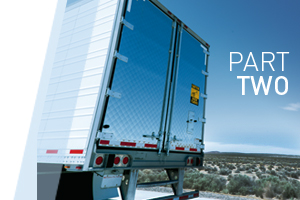
Last week, I explained how cargo thieves are targeting low-value products, as opposed to the high-end goods that have been their top priority in the past. While the types of crimes may have changed, the need for countermeasures has not. There are steps you can take to shield your supply chain against theft.
In North America, the hot spots for cargo crime are the areas around the cities of Atlanta, Los Angeles, Miami, New York, Toronto, and anywhere along the Mexican border, according to cargo insurance specialists at Allianz Global Corporate & Specialty.[1]
These crimes often occur in familiar places. An analysis of theft activity by location for Q3 2011, for example, found that most loads were taken in parking lots (26%), truck stops (25%), and cargo facilities (22%). It’s notable that in as many as 69% of the cases, the scene of the crime was not specified.[2]
Here are ways to make it more difficult for thieves to steal your cargo. These measures should be part of a layered anti-cargo theft strategy, where each layer reinforces other levels of cargo management and control.
- Know your provider. Get familiar with your carrier and/or intermediaries. What is their vetting process? Are they managing to your specified operational expectations, and are they able to demonstrate adherence to these expectations? Questions like these should be part of your due diligence when choosing providers.
- Know yourself. Make sure you have effective procedures in place to vet employees and monitor who has access to sensitive cargo information.
- Deploy the right technology. Tethered and/or embedded GPS, radio frequency identification (RFID) systems, and tracking loads by cell phone should be part of your armory. But keep in mind that these solutions are not a silver bullet; they are components of a comprehensive cargo security program. Many tethered GPS systems, for instance, will pinpoint where a broached truck is located, but not its cargo, which may be long gone. Also, RFID tags are usually not an economic option for tagging low-value goods at the item level.
- Don’t forget the more traditional deterrents. Fitting vehicles and facilities with locks and alarms and instituting best practices, such as parking vehicles in well-lit spaces, fall under this umbrella. Also, be alert to danger signals, such as a facility that appears to be under surveillance, and be ready to respond and report quickly; cargo thieves are as efficient as pit stop crews at dismantling and distributing stolen loads.
- Understand potential routes and transit times. The adage, “Cargo at rest is cargo at risk” is as relevant as ever, so minimizing unnecessary dwell time should be part of your logistics strategy. Reduce exposure by limiting the need for weekend transits that could include excessive dwell time while waiting for weekday delivery windows. Be aware of high theft areas of the country that could be part of a potential route.
- Support law enforcement. Obviously, law enforcement is a primary line of defense against the bad guys. But being actively engaged with these agencies–for example, by inviting them to inspect your premises and participating in joint education sessions–represents a deterrent for individuals who might be tempted to get involved in this type of crime. Also, most law enforcement budgets are under pressure right now, and during these periods, resources are traditionally steered toward prevention of more violent crime activities. Cargo theft has significant negative economic and societal impact. By demonstrating that business values these units, you will help them to avoid damaging budget cuts.
Safeguarding your freight against cargo thieves is not complex. But it’s important to remember that each supply chain and its associated links offer unique security risks that must be evaluated and managed individually.



